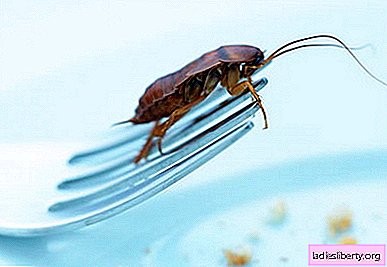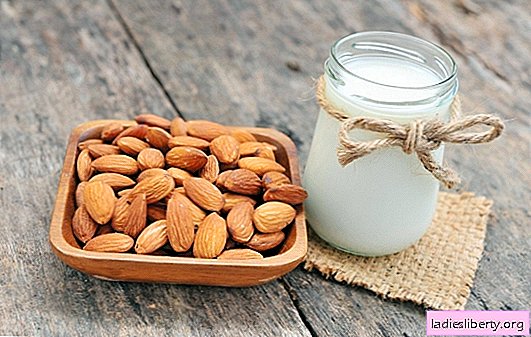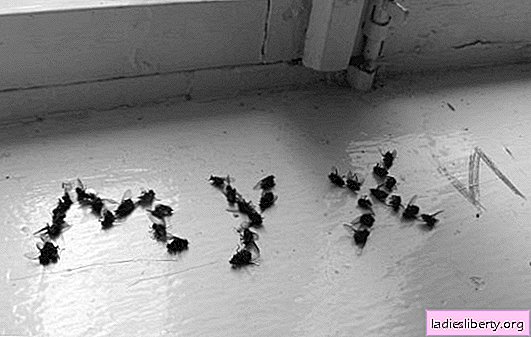
Radish - according to its characteristics, it is the culture of a long day, which means that it needs a daylight time for flowering and the formation of quality seeds, at least 13 hours.
If the duration of daylight does not exceed 12 hours, the formation of an arrow with seeds (which is what we need) is difficult.
Radish root grows very quickly, the plant reacts poorly to the introduction of fresh organic matter, poorly developed with a lack of moisture and with too thick plantings.
Selection of planting material, seeds
First of all, you need to think about purchasing planting material suitable for your conditions. The right choice - the key to obtaining a rich and fast harvest. When growing radishes, the choice is often stopped varieties, planting which allows you to get a harvest in the shortest possible time.
It is advisable to carefully examine the seeds and evaluate their quality. It is necessary that the seeds were brown - this is one of the signs of their freshness. The seed of gray color is likely old, and its germination is probably minimal.
The varieties of this culture differ not only in the shape of the root, its color, ripening, but also to taste. One variety will grow juicy without a strong taste, another will become bitter, there are varieties with yellow and white flesh.
The choice of varieties of radish for growing
Now you need to choose varieties for planting. First of all produce sowing of radish 18 days and varieties Early red. Breeders brought a lot of varieties intended for the cultivation of radish in the summer. They have a longer growing season, but these plants form roots larger than early varieties, for example, such as Red Giant, Red giant, Octave. In the first decade of September they will give juicy and large fruits. Some varieties of late ripening, for example, the Red Giant, do not deteriorate for up to 2 months when stored in a cellar.

Common varieties:
18 days - early very early variety, grows elongated-cylindrical root crop weighing less than 17 g pink and white tip. Dense white flesh without voids has a taste with a little sharpness;
Heat - the grade giving a commodity root crop in 18-20 days after emergence of shoots. Radish red-raspberry color, round shape with a slightly pungent taste with very juicy, soft-tasting pulp;
Cardinal - sredneranny hybrid, forms a round root crop within 25 days. The variety is not subject to the early appearance of arrows;
Red giant - medium early ripening, can be stored for a long time. Dark red roots weighing up to 150 g, grow in 30-40 days, tasty, dense, pinkish inside;
Octave - mid-season variety. The round white root vegetable has no internal voids;
Red Giant - late ripe grade, suitable for storage for a long time. Red elongated roots grow to 300 g
Some gardeners doubt whether it is possible to grow radishes 18 days in this period. In practice, this variety produces a crop in 23-25 days. The root is able to grow in 18 days only under optimal conditions.
All varieties that have a white tail, for example, French breakfast, 18 days, can not be long to keep the garden. In root vegetables may appear emptiness.
Sowing and planting radish
It is a cold-resistant culture that can withstand a temperature drop of -2 degrees, the seeds germinate at a temperature of + 2-3 degrees. The optimum temperature for growth is +16 - +18 degrees. Radishes in the middle lane can begin to sow in the open in the middle lane in the last decade of April - the first decade of May. To the root crop was on your table as long as possible, sow its seeds a little every 10-20 days. You can update the planting of radish almost all summer, except for June and July. Radish grows well on beds where tomatoes grew. If from April every week to sow a new bed of radish until May 20, on unoccupied plots, then you can get a solid harvest, while preparing the ground for other vegetables.
Seeds are best planted in rows at intervals of 8-10 cm, sowing seeds into the grooves 1-2 cm deep. About 15 g of seeds are sown per 10 m2, they have a good germination rate for 5-6 years, 1000 radish seeds weigh 7-10 g.

It is necessary to sow this crop, in a soil poured in advance, after the formation of a true leaf, it is desirable to thin the crops, leaving the seedlings 2-3 cm. But it is better to sow the seeds one by one, since thinning injures the roots of the plant, after which the radish grows worse.
Radish is not demanding on the quality of the soil, but the crop is increased on loose, nutritious soil with slightly acidic or neutral acidity. The root crop develops poorly on heavy and poor sandy loam soil, this can be corrected by adding 20–30 kg of humus per 10 m2. Under the digging area in the autumn, add rotted compost or humus. It is necessary to dig up the soil by 30 cm, with the arrival of spring, they again dig up the bed to a depth of 20 cm, necessarily spilling potassium-phosphorus fertilizer on the soil surface.
The most suitable day length for the cultivation of radish is 8-10 hours, with a day duration of 14 hours, the radish instead of the growth of the root crop goes to reproduction. The plant throws out the arrow, and there will be no harvest. Varieties of early ripening time to increase the duration of the day grow. In the last decade of spring to mid-summer, it is not worth sowing late-ripening varieties. To grow a good crop, you need to choose the appropriate variety, and provide shading beds with radishes. If it is impossible to cover the beds from the sun, then it is better to move the crops by the end of the summer, when the length of the day will decrease. In this case, the plants will not form an arrow, the roots will grow large and tasty. To obtain the earliest production, it is possible to produce underwinter radish.
We grow radishes: sowing seeds
There are several ways to sow radish. This plant loves well-hydrated, loose soil. The cultivation of radish is produced on well-prepared beds: the soil must be carefully dug, add well-rotted manure, chop clods and level the surface of the beds.
First way

It is better to prepare the soil for early sowing in the fall, it should be well shed and prepared in rows 1-2 cm deep. To save seeds, they are carefully arranged one by one in a row after 5 cm. The grooves for sowing are cut into not less than 10 cm, when the seeds are distributed, they are asleep and pressed with the palm, so that the soil is tightly pressed to the seeds, so they will grow faster. With good weather, the first seedlings can be seen in 3-4 days.
Second way
If there is not enough space on your plot to plant all the necessary vegetables, then you can grow a fairly decent crop by sowing radishes with a special marker.

On an inch board, teeth are cut through 5 cm to a depth of 1 cm. Thus, 400 radish root crops can be grown per 1 m2. Plants will not be placed in rows, but by continuous sowing. Root crops will grow one to one. The soil on the bed should be uniform without lumps and should not dry out. The marker is placed on the ground and pressed into the ground, the adhered soil is cleaned. Smooth holes are obtained, seeds are placed in them, covered with soil and pressed with a palm. If the soil is poorly leveled, the cloves will not pitted. Thus, on 1 m2 you can grow radish to 5 kg.
The third method (subwinter seeding)
For the sowing of this crop, a bed with sandy or sandy sand is prepared for the winter in the fall, it is good if it is located on the southern or southeast slope. Rows are cooked at the end of October, when steady frosts come, sow radishes with dry seeds, the most suitable time for such sowing in the middle lane from 5 to 20 November. The bed for the winter must be sprinkled with peat, rotted foliage or humus layer of 3 cm.
The fourth method (winter sowing)
Sowing radish seeds in frozen ground in December - February can be obtained roots by 14-16 days earlier than with spring sowing. To do this, the ridge must be prepared in October. The grooves are formed with a depth of 4–5 cm, in winter they remove a layer of snow, lay out the seeds and close them with peat, rotted leaves or compost 2-3 cm thick.
Growing radishes in the absence of rain is necessary to water it daily. If it is too hot outside, it is necessary to water it at least once a day. The moisture for this crop is very important, if dry periods alternate with watering unevenly, the roots will begin to crack. With a lot of moisture, the radish will grow watery and tasteless. If the moisture is low, the roots will grow with a hard crust, elongated and bitter. For early varieties in poor areas, it is desirable to carry out fertilizing with mineral fertilizers, late varieties can be fed twice, but no more.
We grow radishes: care, dressing
After sowing, the garden must be watered daily; dry soil will destroy the germinated seeds. In addition, it is necessary to regularly loosen the soil and remove weed seedlings. To simplify the care of radishes on a wet soil place a layer of mulch with a thickness of 2 cm, for this use peat or humus. The optimum soil moisture for this crop is 80%, for this reason the bed must be watered frequently, otherwise the roots will grow with a bitter aftertaste. At high temperatures and lack of moisture, the plant throws out an arrow, as a result, a normal root crop does not form, and when the humidity drops, the radish cracks.
Thick plantings need to be thinned when the second true leaf appears, removing the seedlings, leaving a space of 5 cm between them. But, it is advisable to immediately sow according to the 5x5 cm scheme, because young plant roots are injured during thinning.
Root crops are harvested as they ripen, carefully pulling out the plants of a normal size for the variety, and served to the table.
The main pests and ways to combat it
White rot | The affected areas lose color, become watery, the leaves are covered with white mycelium, slightly resembling cotton wool. |
Gray rot | The disease often develops during storage of root crops. |
Radish mosaic | Disease of viral origin. Plants do not grow well, mosaic appears on the leaves, and they become deformed, with slight vein necrosis. |
Cruciferous Mildew | The leaves and their petioles, sometimes the stems, are first covered with a powdery white bloom, after a short time the bloom acquires a light brown shade. It is more noticeable on the upper surface of the sheet. Diseased leaves change their shape and then dry up, the plants do not grow well. Disease control: The use of crop rotation; Isolation of beds with radish from cruciferous vegetables; On seed plantations, uterine plants work out substances that delay the development of the disease. |
Downy mildew | The disease develops on a vegetative mass: chlorotic points first form on the upper side of the leaf, then they acquire a light yellow color, then they turn brown, and a grayish-purple bloom appears from the bottom of the leaf where the dots appear. |
Root blackening | Disease plants, which can be recognized by the grayish-blue spots on the roots, they are visible in the flesh. After the disease spreads over the entire area of the root, it becomes wrinkled and begins to rot. Fight against the disease - it is impossible to grow radishes in too wet areas, plants with signs of illness after harvest must be burned, in greenhouses and hotbeds it is necessary to disinfect the soil. |
Blackleg | This disease can be recognized by the following features: the upper part of the root and the bottom of the rosette of leaves thin out and darkens, the pulp of the root becomes soft, the surface of the plant is covered with white fungus. On the cut root is dark. At the seedling on the root neck, the fabric turns black and softens, after that the neck becomes thin and rots, then the plant dies. |
Cabbage Whitefish | A large butterfly with white wings, on which black dots are noticeable, caterpillars of a yellowish-green pest with dark spots and stripes on the sides of a yellow shade. At first they develop in colonies under the leaves, and after that they move to neighboring plants. |
Cruciferous flea | Crucified cruciferous crops are destroyed by feeding on their leaves. Externally, they look like small insects with a dark metallic shade. |
Cabbage Mole | It is a pest of a gray-brown shade, with wings 14-18 mm wide, with dark fringe visible on the wings. Insect larvae are injured - caterpillars hatched from eggs. |
Spring Cabbage Fly | The fly, reaching a length of 6 mm, gray. Larvae, narrowed at the front, without legs, white, about 8 mm in size. The larvae feed on the tissues of the main root, the plants become bluish in color, develop poorly, then wither and die. |
Summer Cabbage Fly | It does the most damage in the peat bog areas. The summer fly looks like a spring fly, but a little longer than 7-8 mm. |
Stem Nematode | Adult pests and their larvae bite through the vegetative organs, feeding on sap, the plants become bent, their development slows down. |
Wireworms | Young roots, young roots and stalks of seedlings eat at seedlings. |











